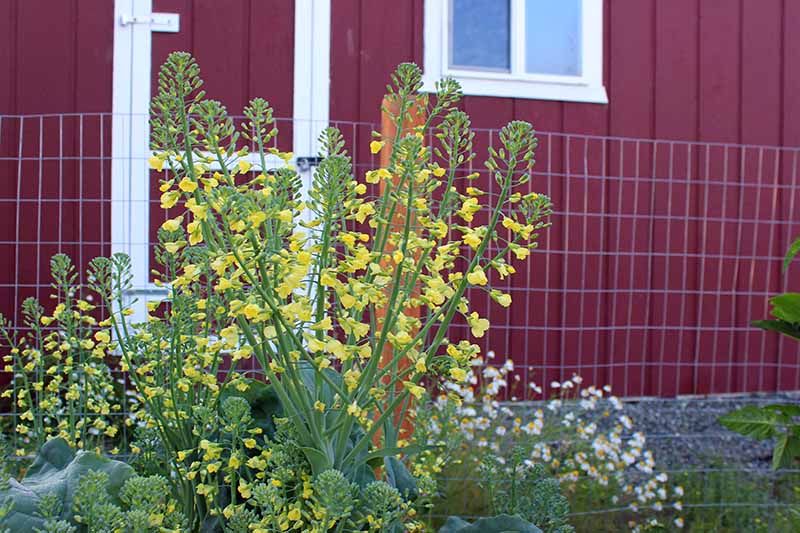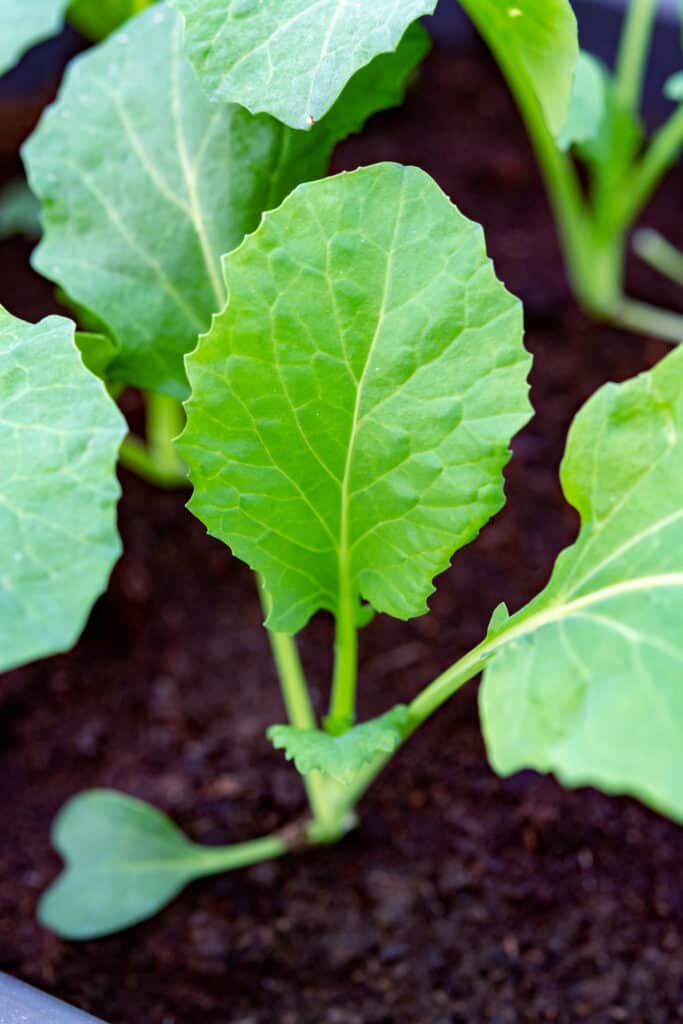1 How to Grow Broccoli in a Home Garden – Bob Vila
- Author: bobvila.com
- Published Date: 01/12/2022
- Review: 4.84 (632 vote)
- Summary: · How do you plant broccoli? · Plant seeds indoors in a seed starting mix. · Keep them at an average of 75 degrees Fahrenheit. · Plants are ready to
- Matching search results: Plant broccoli in a raised bed or vegetable bed with well-draining soil enriched with compost in a full-sun location. Broccoli needs 6 to 8 hours of sun to produce flowers, which are the part of the plant that’s ultimately harvested. Skimping on …
- Source: 🔗
2 How to Grow and Care for Broccoli
- Author: thespruce.com
- Published Date: 11/18/2021
- Review: 4.7 (562 vote)
- Summary: · To start them in a container, use a shallow tray filled with moist seed-starter mix. Put the container in bright, indirect light in a spot that
- Matching search results: Plant broccoli in a raised bed or vegetable bed with well-draining soil enriched with compost in a full-sun location. Broccoli needs 6 to 8 hours of sun to produce flowers, which are the part of the plant that’s ultimately harvested. Skimping on …
- Source: 🔗
3 How to Start Broccoli from Seed

- Author: gardenerspath.com
- Published Date: 07/29/2022
- Review: 4.56 (300 vote)
- Summary: Direct Sowing Sow two seeds apiece in holes 1/4 to 1/2 inch deep . Holes should be spaced 18 inches apart in rows that are 24 inches apart. Keep the area moist with a spray bottle until germination occurs. Once you see sprouts, thin each planting area so that it only has one seedling
- Matching search results: Plant broccoli in a raised bed or vegetable bed with well-draining soil enriched with compost in a full-sun location. Broccoli needs 6 to 8 hours of sun to produce flowers, which are the part of the plant that’s ultimately harvested. Skimping on …
- Source: 🔗
4 How To Grow Broccoli – Eco Organic Garden
- Author: ecoorganicgarden.com.au
- Published Date: 10/24/2022
- Review: 4.39 (506 vote)
- Summary: Plants can be grown from seeds or seedlings. Seeds are best sown in trays first and will take about 10 days to germinate. Then, when they are 5-10cm high,
- Matching search results: Plant broccoli in a raised bed or vegetable bed with well-draining soil enriched with compost in a full-sun location. Broccoli needs 6 to 8 hours of sun to produce flowers, which are the part of the plant that’s ultimately harvested. Skimping on …
- Source: 🔗
5 Broccoli Seed Starting Tips – Harvest to Table

- Author: harvesttotable.com
- Published Date: 06/14/2022
- Review: 4.18 (553 vote)
- Summary: Broccoli Sowing and Planting Tips · Start broccoli from seed or transplants. · Seed is viable for 3 years. · For spring crop start seeds indoors 7 to 9 weeks
- Matching search results: Interplanting: Plant with bush beans, beets, carrots, celery, chard, cucumbers, lettuce, and peas. Herbs with a strong fragrance such as dill, sage, rosemary, basil, mint, garlic and thyme are also good companions for broccoli. The strong aroma of …
- Source: 🔗
6 Planting Broccoli Seed: How To Save Broccoli Seeds In The Garden
- Author: gardeningknowhow.com
- Published Date: 06/17/2022
- Review: 3.86 (501 vote)
- Summary: · Planting Broccoli Seed … To plant your broccoli seeds, start them indoors six to eight weeks before the last frost in warm, moist soil. Keep
- Matching search results: Broccoli (Brassica oleracea) belongs to the large family Brassicaceae/Crucifera, which includes other vegetables like Brussels sprouts, kale, collard greens, cauliflower, cabbage, and kohlrabi. Broccoli is a cool weather plant originating from Asia …
- Source: 🔗
7 How to Grow Broccoli from Seed

- Author: sandiegoseedcompany.com
- Published Date: 06/29/2022
- Review: 3.72 (203 vote)
- Summary: Broccoli seeds need to germinate in cool, moist soil, which may be difficult to create when direct seeding during the warm summer and fall months. Broccoli
- Matching search results: When you are ready to harvest your broccoli, take a sharp knife or a sharp pair of pruners and cut just below the broccoli head you wish to harvest. With most varieties of broccoli, you can harvest the central head and allow for side shoots to …
- Source: 🔗
8 Growing Broccoli – How to Grow Broccoli

- Author: allotment-garden.org
- Published Date: 05/16/2022
- Review: 3.54 (404 vote)
- Summary: Sow seeds between April – June. Sow them into trays or a well prepared seed bed in drills 1cm (1/2″) deep spaced 30cm (12″) apart. Cover seeds
- Matching search results: Sow seeds between April – June. Sow them into trays or a well prepared seed bed in drills 1cm (1/2″) deep spaced 30cm (12″) apart. Cover seeds with a fine soil and keep moist during germination. Plant out in early summer for a crop in the following …
- Source: 🔗
9 Learn About Broccoli – Burpee Seeds
- Author: burpee.com
- Published Date: 08/15/2022
- Review: 3.25 (225 vote)
- Summary: · How to Sow and Plant · Sow in average soil in a sunny location in early spring or in midsummer for a fall crop. · In rows 2 feet apart, sow seeds
- Matching search results: Bacterial Leaf Spot: This causes brown water soaked spots on the foliage which eventually makes the foliage turn yellow. It thrives in cooler temperatures. Burpee Recommends: Remove infected plants. Rotate crops with plants in a different family. …
- Source: 🔗
10 How to Grow Broccoli – MSU Extension
- Author: canr.msu.edu
- Published Date: 08/16/2022
- Review: 3 (404 vote)
- Summary: · Seed facts · Germination temperature: 45°F to 85°F · Germination time: 4 to 20 days · Viability: 3 to 4 years · Direct sow: Early June (fall crop)
- Matching search results: Bacterial Leaf Spot: This causes brown water soaked spots on the foliage which eventually makes the foliage turn yellow. It thrives in cooler temperatures. Burpee Recommends: Remove infected plants. Rotate crops with plants in a different family. …
- Source: 🔗
11 How to Grow Broccoli – Palmers

- Author: palmers.co.nz
- Published Date: 04/01/2022
- Review: 2.87 (104 vote)
- Summary: Plant seeds 1cm deep, make sure that you space out your seeds to allow the heads to grow nice and big. If you over-seed you will need to thin out your seedlings
- Matching search results: For best flavour, harvest broccoli heads while the buds are just starting to swell, but before the yellow petals start to show. Keep an eye on the head because when it begins to spread open, the individual buds start to flower. Harvest the central …
- Source: 🔗
12 How to Grow Broccoli – West Coast Seeds
- Author: westcoastseeds.com
- Published Date: 06/10/2022
- Review: 2.74 (177 vote)
- Summary: · Sow indoors, 3 or 4 seeds per pot, 5mm (¼”) deep, under very bright light. Thin to the strongest plant. Space transplants 45-60cm (18-24″) apart
- Matching search results: Diseases & Pests Slugs and snails – Slugs are attracted to beer, so place a little beer in a cup dug into the ground. Sprinkle broken eggshells around plants to deter slugs and snails. Flea beetles – Use row covers to help protect plants from …
- Source: 🔗
13 How to Grow Broccoli Plants
- Author: miraclegro.com
- Published Date: 11/12/2021
- Review: 2.75 (175 vote)
- Summary: When sowing seeds, plant them a couple of weeks before your last spring frost date, then move them to the garden once all chance of frost has passed. Fall crops
- Matching search results: Diseases & Pests Slugs and snails – Slugs are attracted to beer, so place a little beer in a cup dug into the ground. Sprinkle broken eggshells around plants to deter slugs and snails. Flea beetles – Use row covers to help protect plants from …
- Source: 🔗
14 How to grow broccoli – Yates
- Author: yates.co.nz
- Published Date: 12/24/2021
- Review: 2.65 (87 vote)
- Summary: Broccoli seed can be sown from summer to autumn in all but the coldest districts. In cold areas, it’s better to start broccoli seeds in late spring or early
- Matching search results: Diseases & Pests Slugs and snails – Slugs are attracted to beer, so place a little beer in a cup dug into the ground. Sprinkle broken eggshells around plants to deter slugs and snails. Flea beetles – Use row covers to help protect plants from …
- Source: 🔗
15 How to Grow Broccoli | BBC Gardeners World Magazine
- Author: gardenersworld.com
- Published Date: 07/21/2022
- Review: 2.48 (188 vote)
- Summary: · Sow seeds in modules of peat-free compost, every six weeks from spring to autumn. Thin seedlings and plant out when they’re large enough to
- Matching search results: Depending on the type of broccoli you’re growing, you can start cutting spears about 12 weeks after sowing. Cut the main, central head, first, which will trigger the development of side shoots. Then continue to cut side shoots regularly over the …
- Source: 🔗
16 6 Things You Need to Know Before Growing Broccoli
- Author: goodhousekeeping.com
- Published Date: 04/05/2022
- Review: 2.49 (171 vote)
- Summary: · You can easily calculate the perfect time to plant broccoli seeds this fall. If you want to sow seeds directly in the garden, do so about 85
- Matching search results: For best flavor, harvest broccoli heads while the buds are just starting to swell but before the yellow petals start to show. Keep an eye on the head because when it begins to spread open, the individual buds start to flower. Harvest the central …
- Source: 🔗
17 Growing broccoli in home gardens
- Author: extension.umn.edu
- Published Date: 02/03/2022
- Review: 2.3 (94 vote)
- Summary: Planting · Direct seed broccoli in July. · Plant seed shallowly, one-fourth to one-half inch deep, dropping three seeds every eight to 10 inches. · Keep the soil
- Matching search results: For best flavor, harvest broccoli heads while the buds are just starting to swell but before the yellow petals start to show. Keep an eye on the head because when it begins to spread open, the individual buds start to flower. Harvest the central …
- Source: 🔗